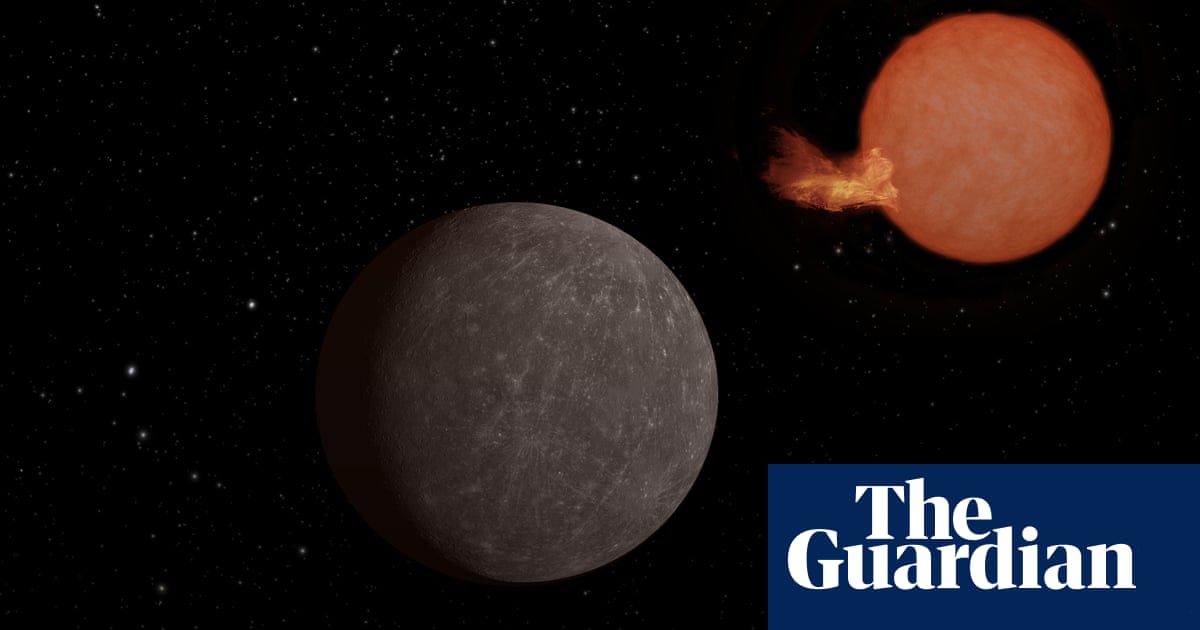Speculoos-3b, 55 light years away, is only second planetary system to be found around an ultra-cool red dwarf
Astronomers have discovered a new Earth-sized planet orbiting a small, cool star that is expected to shine for 100 times longer than the sun.
The rocky world, called Speculoos-3b, is 55 light years from Earth and was detected as it passed in front of its host star, an ultra-cool red dwarf that is half as hot as the sun and 100 times less luminous.
The newly discovered world, described as “practically the same size as our planet”, swings around the red dwarf once every 17 hours, making a year on the planet shorter than a single Earth day.
But while the years are short on Speculoos-3b, the days and nights are never-ending. “We believe that the planet rotates synchronously, so that the same side, called the day side, always faces the star, just like the moon does for the Earth. On the other hand, the night side hand, would be locked in endless darkness,” said Michaël Gillon, an astronomer at the University of Liège in Belgium and lead author on the study.
We just need a rock slightly bigger than our moon to collide with it, giving it a flick to start rotation on its axis, then, in time, we can send in the dinosaurs for a trial run, just to be safe.
We’d ideally send a rock the size of Mars to collide with it. Not only would it impart spin on the planet, the ejecta would create a moon to protect the future dinosaur inhabitants from quite a few meteors. And really, haven’t dinosaurs suffered enough at the hands of meteors?
So we smash big rock into bigger rock to make smaller rock to protect against even smaller rocks
Feels like a retirement planet.
hmmm
"The planet’s tight orbit means it is bombarded with radiation, receiving almost 16 times more energy per second than Earth.
“In such an environment, the presence of an atmosphere around the planet is highly unlikely,”"
Florida 2?
I was thinking the same and if realism is creeping in if we can cope with the 55 light year journey we likely can cope with the radiation and lack of atmosphere.

orbiting a small, cool star that is expected to shine for 100 times longer than the sun
an ultra-cool red dwarf that is half as hot as the sun and 100 times less luminous.
described as “practically the same size as our planet”
swings around the red dwarf once every 17 hours, making a year on the planet shorter than a single Earth day.
“We believe that the planet rotates synchronously, so that the same side, called the day side, always faces the star, just like the moon does for the Earth.
Earth-sized rocky planet close to red dwarf, tidally locked, got it.
What is this stile of reporting called? Sensationalist?
And why is that star system special?
The point is that we were able to detect the planet at all. That’s interesting enough in itself, and at no point is the article insinuating anything spectacular about the planet itself.
Ah, thanks. Because small and dark?
I believe so. Tbh it feels a little like the NASA version of “look at this cool rock I found!”
I think that is probably the point of NASA and science generally, they are both essentially a small child finding new and interesting things to show the grown-ups.
And named after a Belgian cookie that was made because the Dutch hoarded the spices for true speculaas. Nice
Set sails, boys!
Taldain?




